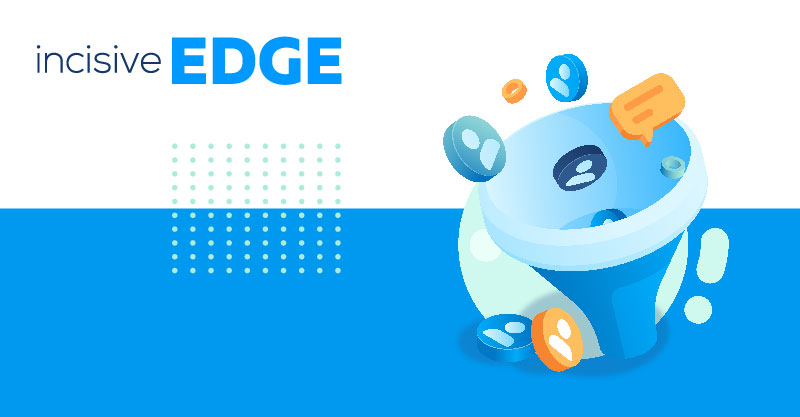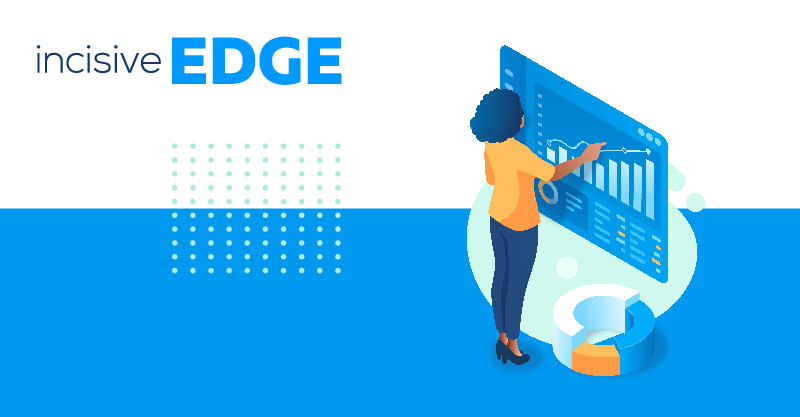Can you really boost conversion rates through content marketing? The answer starts with asking yourself one simple question: ‘why does my website exist?'
This was our starting point because we wondered whether companies have ever really searched for the answer to this question. Whilst every company has a website, the true purpose of the site often seems to have been overlooked.
So, if on deep reflection the answer remains akin to one of the following:
- ‘Well the whole world has gone digital hasn't it'
- ‘You've got to be online or you are nobody these days'
- ‘We want to look credible and tell people what we do'
- ‘Our competitors are online and we don't want to miss out'
- ‘That's what marketing do – it's our brochure on the internet so it's easy to find'
Then, you are quite simply missing the biggest trick on them all.
The purpose of your website and landing pages is to act as the hub of your business. Your site operates as the interface between your marketing and sales activity.
It is a platform onto which you want to direct your target buyers, to inform and engage them with useful content and resource, progressing them towards a buying decision and ultimately, inducing them to take a positive action towards your goal of having them exchange money for your products or services.
We term this online action as a conversion – a measurable, identifiable action taken on your website by a user (prospect), underpinned with a financial imperative.
In other words, your website is your hardest working salesperson, a place to direct the people you want to buy from you, where they can be educated, informed and build the basis of a trusting relationship with your company. And then take action towards completing a sale with you (unless they can complete the sales process directly from the website in an e-commerce capacity).
To make your website as effective as possible in fulfilling this true purpose, a number of key elements are required.
From our experience, we believe that these elements - of which content marketing for conversion is a vital pillar - require alignment to derive the best results.
The success of a website and how it converts, depends to a large part on its content. Quality content needs to resonate with your prospects and provide a positive user experience – to add value.
The delivery method of the content in converting visitors, also plays a role in the success of your website and helps to move prospects towards their conversion goals.
The success is dependent on the role of the prospect in the buying process. Whether they are an influencer or decision maker, the time they have available, where they currently reside in the marketing funnel and buying process, the style and tone that resonates with their persona characteristics, time of day, and which platform they may be engaging with.
By way of example, a user requiring detail and seeking in-depth research on a subject whilst sitting at home in the evening, might want white papers and eBooks presented on their desktop, whilst those time-poor users standing on a platform waiting for their morning train, mobile devices in hand, may prefer infographics to get those salient points.
Whichever devise or format, content is essential to increase your conversion rate of potential customers.
There is no doubt that quality, information-led content along high quality images and landing pages will create conversion optimisation. However, quality, targeted content will generate far greater numbers. It will also increase website visibility through improved Search Engine Optimisation (SEO).
Content is often the focus of CRO campaigns.. While content creators and conversion optimisers may have separate objectives and work in different ways, they need to pull together and integrate, to deliver results.
What is Content Marketing Conversion Rates
Content creators, marketers and conversion rate optimisation experts need to have an in-depth understanding of their website's target audience. Knowing at what stage of the buying-cycle users are at and what resonates best with them will help content creators target what to write and how to deliver it.
Google's Hummingbird update rewards the visibility of websites in organic search which have resonant content – those that provide what is actually promised and signposted to the people that want it.
Meanwhile, CRO specialists need to know what changes will have the most impact based on users' behaviours, so they can adjust and improve the website layout (based on metrics and heat maps - which visualises onsite behaviour), to increase average conversion rate and drive positive action.
The results of A/B tests (where two differing options are presented at random to users and their interaction with each compared over a specific time period), show what is most popular with users as verified in terms of numbers of downloads and page views (plus dwell time and bounce rate metrics). This helps to direct the future strategy of content creators; for your website's conversion rate.
At the same time, successful content helps inform conversion optimisers which tests are likely to have the largest impact. If, for example, blogs have popular content, then tests can be run to include more blog content across other areas of the website and direct activity like email marketing campaigns.
Whilst strong added value content is likely to generate positive A/B test results, poor content obviously may induce the opposite.
A poorly written blog post used in a test to see the overall effectiveness of having a blog as a delivery method is likely to produce inaccurate results.
Feedback from verified users is particularly beneficial at discovering content issues on a website and can help generate ideas on the different type of content which visitors may wish to engage with.
Keeping this fresh and regularly updated, keeps visitors engaged and search rankings high.
Interesting or entertaining content can lead to increased social media shares on social networks, improving the searchability of a website through increased backlinks and greater traffic, which in turn, can generate quicker A/B test results from the incoming traffic.
It is important to test and learn quickly, so that you can iterate your website for perpetual improvement, towards your core goals of increasing the number of prospective buyers to the platform; and in your buying funnel and getting them to convert and take action towards your sales objectives.
During this process it is important to minimise any conflict of interest between content creators and CRO experts.
Scheduling content changes and CRO campaigns together is useful, but may be difficult to achieve, given that content changes can be undertaken quickly, whilst A/B (or multi-variant) testing is generally longer term and requires planning and analysis.
Content creators and conversion optimisers may need to relinquish control and compromise when necessary.
CRO specialists can also consider more than just conversions alone. Content need not solely exist to generate conversions, but to improve user experience, brand perception, engagement and encourage sharing across social media.
Meanwhile, content creators may have to accept test results showing for example, that simpler content works more effectively than that which they have spent a lot of time to create.
Your website is not a vanity project. If the testing shows that your market responds better to something different to that which had originally been envisaged, then you need to run with it. The results will justify the action in more conversions and a larger company bank account and fuller sales pipeline.
Keep in mind however, that conversion rate optimisers need to be mindful that testing for the sake of it can be counter-productive, especially given the potential amount of work required from content editors when setting A/B tests.
Writing copy in two different styles to see how users respond differently may not be practical, whereas changing colour, positioning and format may be more efficient and effective to map user behavior.
CRO test results which may be designed to change the layout of your website can sometimes be skewed by social sharing, should users arrive at a page with content not built for the purpose of conversion, but instead for the purpose of being shared to drive, for example, brand awareness.
Sharing a page which is part of a test but has a different content version to that expected, or where content has been removed, can cause confusion and induce a loss in traction.
In summary
If your website is the hub of your inbound marketing and activity, then quality, targeted content is the fuel that keeps the wheels turning. Strong optimised targeted content will increase conversions and your visibility on search engines and across social media and will reach your prospective buyers more effectively.
Content provides the assets to be deployed in your inbound marketing activity and nurture users onto your site. It will engage these visitors and when deployed in alignment with CRO, so that your website is improved in terms of perfected user journeys and engagement, it will result in increased measurable conversions, leading to more sales enquiries.
Align content with conversion rate optimisation on your website. Test, learn, iterate, and improve the platform to bring new visitors to you and to get them to take action towards a sale.








